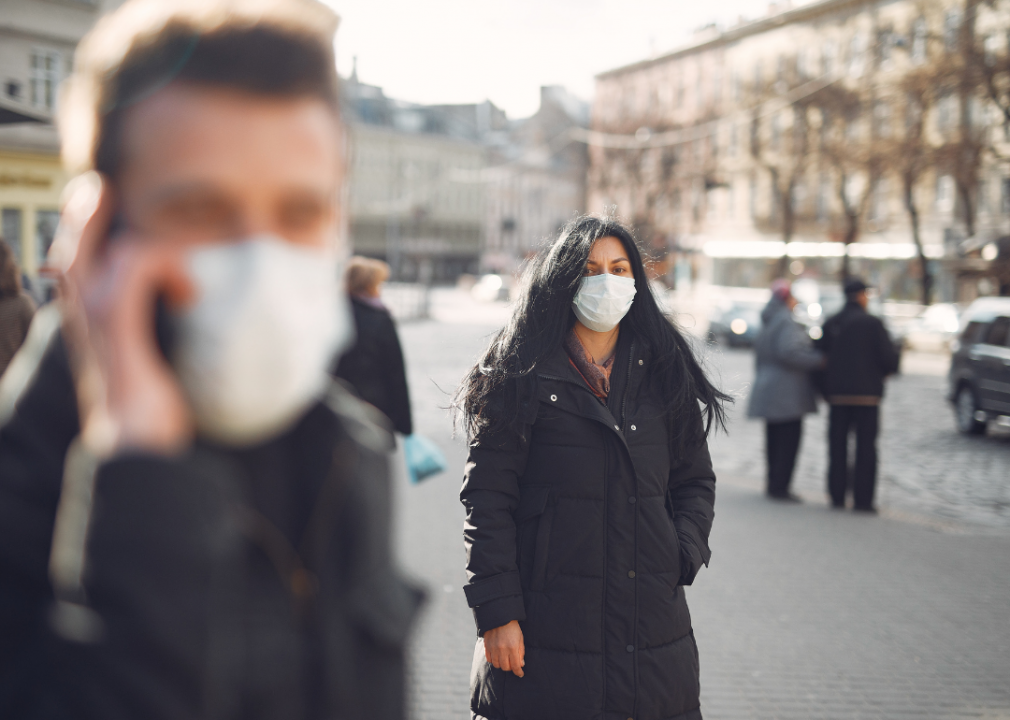
This story originally appeared on HeyTutor and was produced and distributed in partnership with Stacker Studio.
See the child vaccination rates for COVID-19 in California
As of the last week of April 2022, just over 1,100 children in the United States have died from COVID-19 since the start of the pandemic, according to the Centers for Disease Control and Prevention. For comparison, nearly 1 million adults have died in the same time frame. Lower death and hospitalization rates among people 18 and younger may indicate that children experience COVID-19 less severely.
Despite a generally milder illness, schools have been upended during the pandemic, and children have suffered socially, emotionally, and academically from two years of shutdowns and social distancing measures. To combat more systemic disruptions and protect communities on a larger scale, the Food and Drug Administration fully authorized the Pfizer vaccine for people 16 and over and granted emergency authorization for children between 5 and 16. Neither the Moderna nor Johnson & Johnson vaccines are authorized—even on an emergency basis—for those under 17 in the case of Moderna and 18 in the case of Johnson & Johnson.
Citing data compiled by the CDC and the Department of Health and Human Services, HeyTutor looked at vaccination rates among children in every state in the U.S. and Washington D.C. Booster shots are not yet recommended for children under 12. States are ranked by vaccination rates among children ages 5-11 as of Apr. 29, 2022.
Read on to learn more about child vaccination rates in your state, or check out the national list here.
California by the numbers
- Children fully vaccinated:
--- Ages 5-11: 35.5% (1,237,246)
--- Ages 12-17: 72.9% (2,208,793)
- With at least one dose:
--- Ages 5-11: 42.7% (1,485,883)
--- Ages 12-17: 83.5% (2,528,442)
- With booster dose:
--- Ages 12-17: 28.7% (634,239)
There are 73 million children under the age of 18 in the U.S., representing almost one-quarter of the total population. Nationally, about 30% of children between the ages of 5 and 11, and 60% of children between 12 and 17 are fully vaccinated against COVID-19.
Still, concerns about the vaccine persist, with parents questioning its efficacy as well as both its short- and long-term side effects. And while many parents share the same concerns, the strength of those misgivings varies by demographic, geographic, and political lines, according to a recurring survey conducted by the COVID States Project. The project consisted of a multi-university group of researchers from Northeastern, Harvard, Rutgers, and Northwestern Universities. The survey polled nearly 23,000 individuals from the end of December 2021 to late January 2022.
College-educated parents are more likely to vaccinate their children than parents without a college degree, for example. And when looking at parental income as an indicator of vaccination likelihood, 81% of the highest earners—people making at least $150,000 annually—reported they are likely to vaccinate their children compared to 46% of parents earning $25,000 or less.
Parents in the Northeastern and Western U.S. are more likely to vaccinate their teenagers than parents in Midwestern and Southern states. Vaccine likelihood varies significantly between urban and rural breakdowns as well, with parents of teenagers in rural areas reporting they are less likely—by nearly 20 percentage points—to vaccinate their children.
Vaccine hesitancy is higher—and growing—among parents of children between 5 and 11. When looking at the parental political affiliation of this age bracket, 42% of Republican parents surveyed in January 2022 say they are likely to vaccinate their kids compared to 55% of Independents and 76% of Democrats. Among all three groups, the proportion of parents expressing the likelihood of vaccinating their children declined since September 2021.
Politics is playing an increasingly large and sometimes disproportionate role in communication about the COVID-19 vaccine for children. An Associated Press investigation found the anti-vaccine group Children's Health Defense—run by Robert F. Kennedy Jr.—more than doubled its revenue in the first year of the pandemic to $6.8 million. AP reported the group targets and spreads misinformation to people already more likely to not trust the vaccine, including mothers and Black Americans.
Since the fall of 2021, Asian and Hispanic parents are consistently more likely to vaccinate their children, while white and Black parents report a lower likelihood.
As the end of this school year approaches and administrators plan for the fall, COVID-19 vaccine mandates for students will be an ongoing conversation. Currently, four states—California, Illinois, Louisiana, and New York—as well as Washington D.C. have implemented some type of mandate that will be implemented in the fall. Nineteen states have banned them.
Continue on to see which states have the highest and lowest child vaccination rates for COVID-19.
States with the highest child vaccination rates for COVID-19
#1. Vermont: 58.8% of children ages 5-11 and 81.3% of children ages 12-17 fully vaccinated
#2. Rhode Island: 50.7% of children ages 5-11 and 81.6% of children ages 12-17 fully vaccinated
#3. Massachusetts: 49.5% of children ages 5-11 and 78.7% of children ages 12-17 fully vaccinated
States with the lowest child vaccination rates for COVID-19
#1. Alabama: 10.1% of children ages 5-11 and 34.9% of children ages 12-17 fully vaccinated
#2. Louisiana: 11.9% of children ages 5-11 and 38.9% of children ages 12-17 fully vaccinated
#3. Mississippi: 12.2% of children ages 5-11 and 38.1% of children ages 12-17 fully vaccinated



